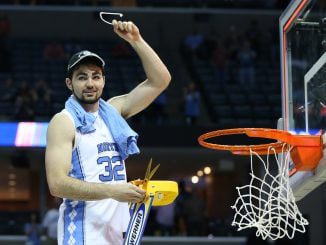
North State Journal’s 100 in 100 series will showcase the best athlete from each of North Carolina’s 100 counties. From Alamance to Yancey, each county will feature one athlete who stands above the rest. Some will be obvious choices, others controversial, but all of our choices are worthy of being recognized for their accomplishments — from the diamond and gridiron to racing ovals and the squared circle. You can see all the profiles as they’re unveiled here.

New Hanover County
Michael Jordan
Anyone who follows sports has heard the story of how a young Michael Jordan was cut from the junior varsity basketball team at Wilmington’s Laney High School and how it fueled him to become arguably the greatest player in NBA history.
It’s an inspiring tale of perseverance and motivation that makes for a great narrative, especially when it’s retold on platforms such as ESPN’s recent documentary “The Last Dance.”
The only problem is that it didn’t actually happen.
Jordan did get left off the varsity roster as a sophomore while his friend and fellow ninth-grader Leroy Smith made the team, primarily because he was 6-foot-7 and Jordan was only 5-10 at the time and the team needed size. But he did play on the junior varsity during that 1978-79 season, beginning a Hall of Fame career that didn’t need such embellishment.
Jordan grew four inches between 9th and 10th grade and averaged more than 25 points per game once he did finally make the varsity. He was a McDonald’s All-American as a senior before moving on to Chapel Hill to play for coach Dean Smith and North Carolina. There, he earned ACC Freshman of the Year honors before bursting into the national consciousness by hitting the now-iconic shot that beat Georgetown for the 1982 national championship.

During three seasons with the Tar Heels, Jordan averaged 17.7 points and 5.0 rebounds per game. He was a two-time consensus All-American and the 1984 National Player of the Year before being selected by the Chicago Bulls with the third overall pick in the NBA Draft.
He went on to become a 14-time All-Star, a 10-time NBA scoring champion, a nine-time All-Defensive team selection, a five-time Most Valuable Player and a two-time Olympic gold medalist. He won two Slam Dunk Contest titles, was The Associated Press Athlete of the Year three times and was awarded the Presidential Medal of Freedom in 2016.
He scored 32,292 points, averaging 30.1 per game while compiling 6,672 career rebounds and 5.633 assists. In the process, he led the Bulls to six NBA championships — winning Finals MVP honors each time — while taking nearly two years off in the middle of that run to play minor league baseball.
“He was perhaps the most recognizable athlete in the world for a decade,” Jordan’s coach with the Bulls, Phil Jackson, said upon Jordan’s induction into the Naismith Hall of Fame in 2009. “That he brought the game of basketball and the NBA to that level will never be eclipsed.”



